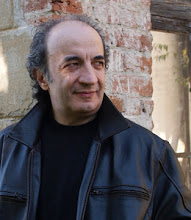
Hello, my dear Japanese friends,
Today we're goin' on with the fascinating subject of jazz/rock still dealing with its roots and origins, focusing on the fact of blending elements from different languages, a main character of jazz-rock, an approach that started some decades before the advent of the style.
we can find the meeting of different musical languages, years before jazz and rock for example when western classical music was influenced by the traditions of popular music, like with Chopin, or Bartok, for example, the first Stravinsky, and sometime not just tradition but even nationalism influenced great composers and sometimes and we found the 'nationalism of another country' attracted composers, like Spanish tradition influenced Ravel.
In this area, a peculiar thing happened, when musicologists criticized composers who were using references of popular music of a country, without respecting fully the characters of the traditions of that reference. We can understand that but don't necessarily agree with this viewpoint, as.. there's freedom in art, I mean, when you create, you can follow the rules, but an artist in my opinion, has "the license" to review what could have been a reference for him and use it following the rules.. or not, and if this "out of scheme" direction take him to a new creative state, to
inspired, interesting compositions, to fresh ideas, welcome to the "updated rule!".
That could have happened also in jazz-rock where someone could have used elements of a language in a way not so appropriate in the style from which it had been taken, it could be a jazz harmony or a rock rhythm, or whatever.
On the other side these elements work so good in the "new idiom"! And the new idiom, like jazz-rock gains a new state, a personality and day after day we have a new language!
Mixing elements of different culture or styles has been defined in different ways and in my opinions some definitions are not so good. Sometimes we have seen the word "contamination" that I don't like too much honestly as the word hasn't a positive sense and in some ways it seems to reduce the "beuty of the fact", as well as I don't like to see the term "globalization", when it is used to delete or to forget cultural tradition, including the artistic aspect.
So jazz-rock is the blend of some elements that simply..were "magnetically" attracted into jazz from rock and into rock form jazz.
We had seen western classical music influencing jazz in the genius of Gershwin, with Dave Brubeck and Berstein, with the progressive jazz of Stan Kenton, on Stravinsly on the other side and so on.
I like to mention Stan Kenton as the word "progressive" was used in jazz before that seeing it applied in rock contest (and we'll see that "the progressive idea itself is definitely "at home" in jazz rock.
Pete Rugolo, one of Kenton's arrangers, in this comment clearly talks about what happened around 1947 in Stan Kenton's band: "I began writing in 5/4 time and changing time signatures in the middle of a piece which I didn't think had been done before in jazz".
This one is a very interesting quote if you think of what happened, 20 years later.
A curiosity: one of the most known Stan Kenton's Tune, "intermission Riff" was recorded as main theme for a TV Program, in the late 60's, by Italian band "Equipe 84" doing a fascinating version, with sitar.
Blending different elements comin' from other styles and painting them with unique colours was not new as approach, in the second half of the sixties, and definitely is the main point of what became "NEW" and definitely one of the most interesting blend in music history: jazz-rock!
I hope today's blog has been interesting for you and tomorrow we'll go on with jazz rock with the first appearance of this style in the musical world.


No comments:
Post a Comment